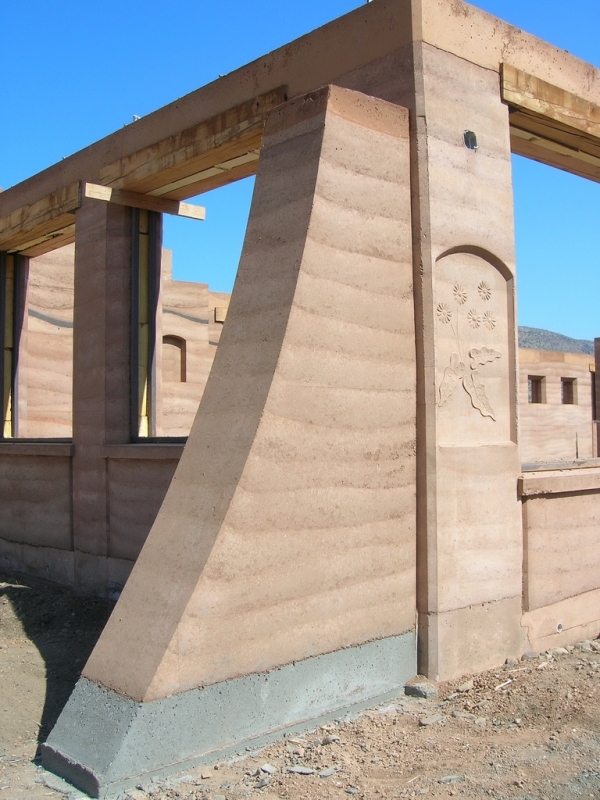Rammed Earth
Video
alt=""Based on historical precedence, rammed earth is becoming a widely accepted practice. Dave Nedrow, who was interviewed for the article Maximizing the Sun's Heat, is a freelance designer formally educated in architecture and is currently pursuing licensure. He offers us some of his research about a highly insulative wall construction with low embodied energy.
Architects and builders are often challenged to look for innovative and cutting edge building technology when considering their choices for materials and types of construction. This investigation often produces interesting and stunning results, and the Modern period in architecture could be partially defined by this. However, let us not forget about historical vernacular styles and methods of construction, specifically that of rammed earth. The continents of Africa and Asia have both housed civilizations utilizing rammed earth as a building material, dating as far back as 2000 BC, and it has continued to be used through to today. Although arguably less technologically advanced, and possibly once considered “low brow”, rammed earth construction offers us new possibilities. As society advances, our use of materials continues to evolve. Historically, earthen bricks were made and stacked to generate the walls.
 Solum Rammed Earth Builders Ltd.
Solum Rammed Earth Builders Ltd.
Today, these walls are generated a bit differently. Contemporary rammed earth construction techniques consist of multiple layers of earth compacted (or rammed) between forms. Each thin layer is compacted to a recommended firmness for strength and durability, and the process is repeated vertically until the desired height is reached. This often produces a visual effect of smoothed strata. Construction calls for a mixture of earth with a low moisture content, often consisting of a combination of clay, sand, and aggregate. Rebar is often introduced for added for stability and structural support. Each rammed earth wall generally sits upon a concrete foundation, or stem wall.
The benefits from building with rammed earth range from structural capacity to economic efficiency. To begin with, it is considered a sustainable building technology for its utilization of Earth’s most abundant resource: the earth itself. The walls inherently result in an excellent thermal mass (at usually 12 to 18 inches thick). Rammed earth construction is highly fire resistant, aids in noise reduction, and has a low embodied energy. The earthen mixture can also be “stabilized” with the addition of concrete, resulting in stronger walls. These walls are considered load-bearing, reaching a compressive strength up to 625 pounds per square inch. In addition, with the use of earth as the wall material, there is no need for interior finish materials like gypsum board, tile, or wallpaper. Once the forms are removed, the ‘finish work’ is completed. Typical concrete forms are often used, making for an economical repurposing of an established technology. The construction of rammed earth walls is both relatively quick and economically affordable.
Worldwide, more than thirty percent of the world’s populations live in buildings constructed of earth. With a little innovation to a historic construction method, contemporary rammed earth structures can be suited for many situations and styles. There is a definite aesthetic look that is inherent in the utilization of rammed earth. The delicate balance of earthen material and man-made form generates a dynamic statement of beauty and longevity. And within the mixture and style of tamping, we can now incorporate different types of soil and pigments, thus a great deal of variation can be achieved. Yet, it is the contemporary need for innovation and responsible building practice that assists the allure of rammed earth. The basic utilization of earth as a building material ultimately constructs a strong statement for sustainability.
Dave Nedrow: From the dynamic landscape of Las Vegas, he gained knowledge of construction by working in the field, as well as valuable experience in architecture with the firm assemblage STUDIO. He received his Bachelor of Science in Architecture from the University of Nevada, Las Vegas, and Master of Architecture from The Ohio State University. Recently, Nedrow competed with the OSU team in the 2009 Solar Decathlon as a co-design lead. With teammates, he constructed, transported, and showcased the project, earning a top-ten finish.

